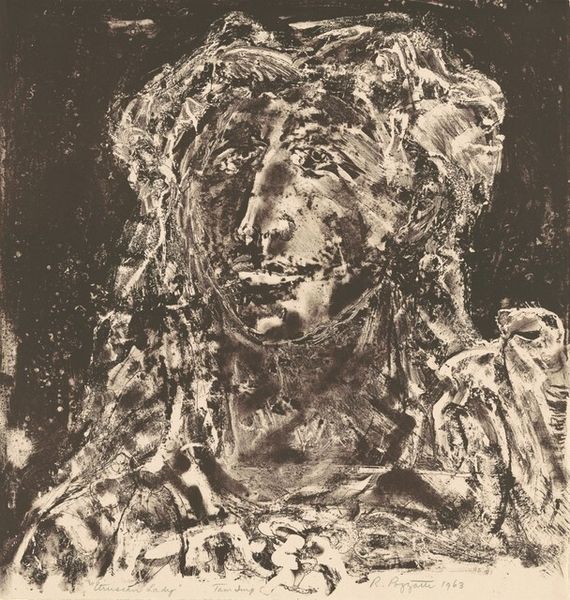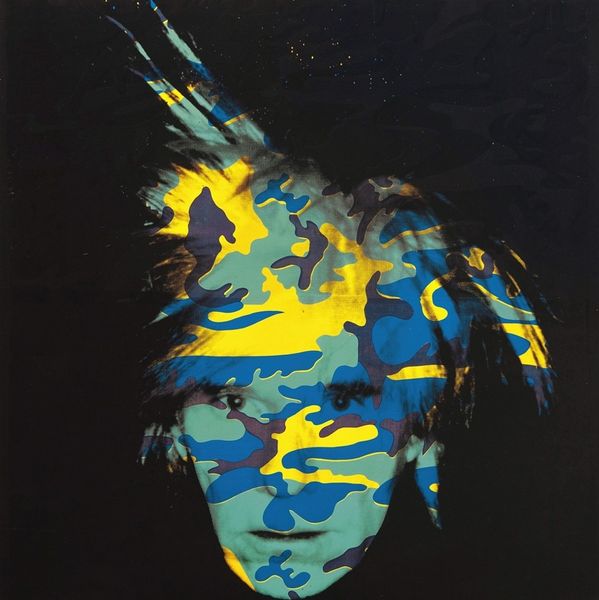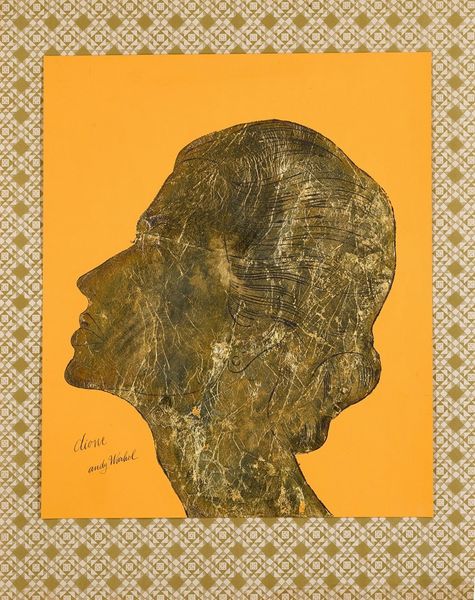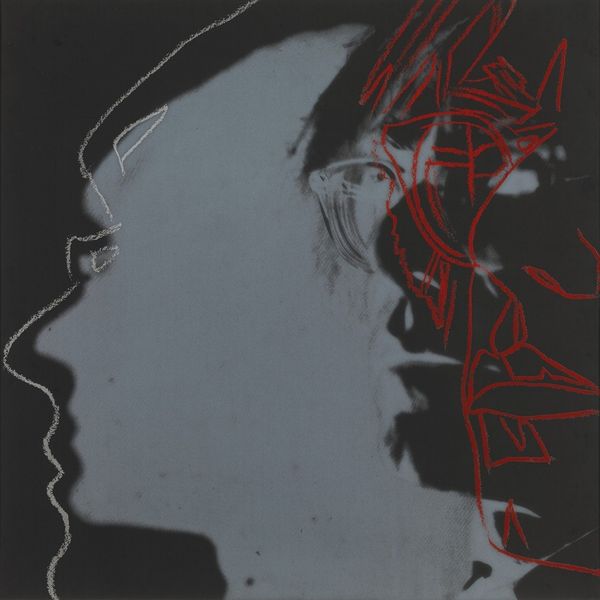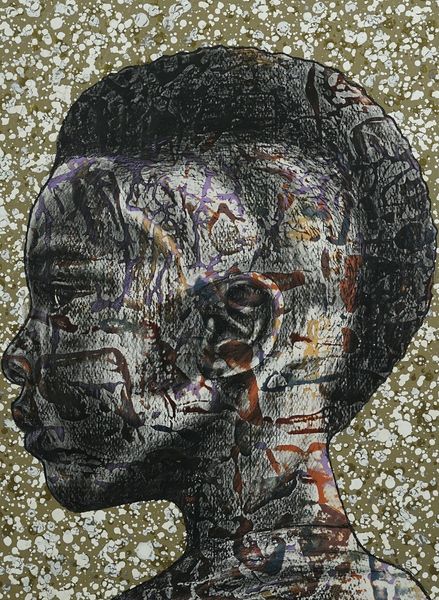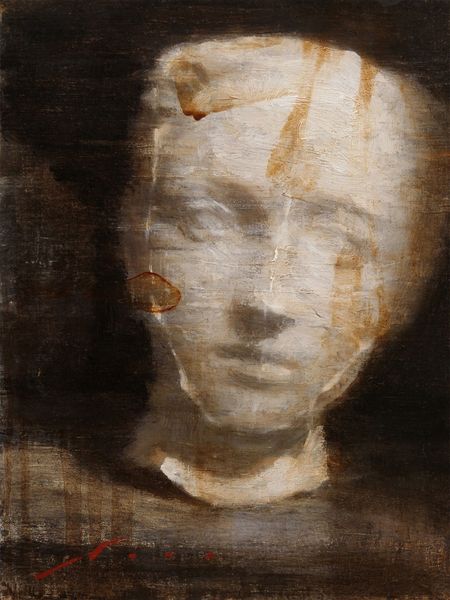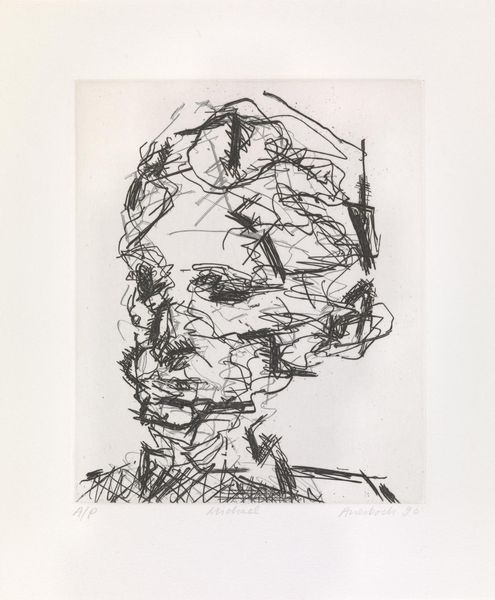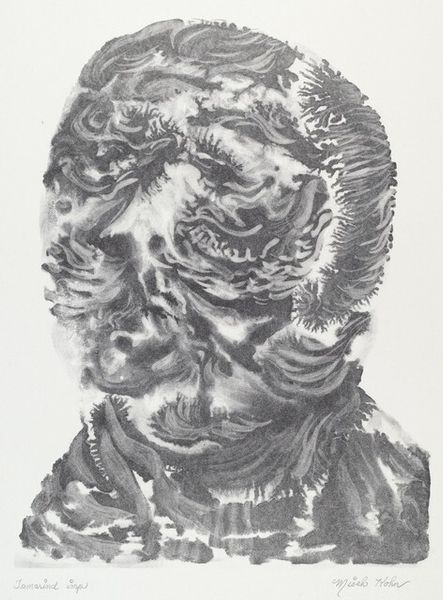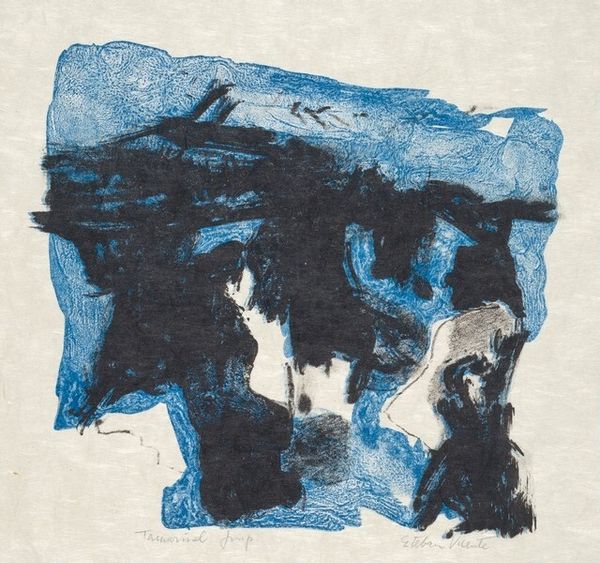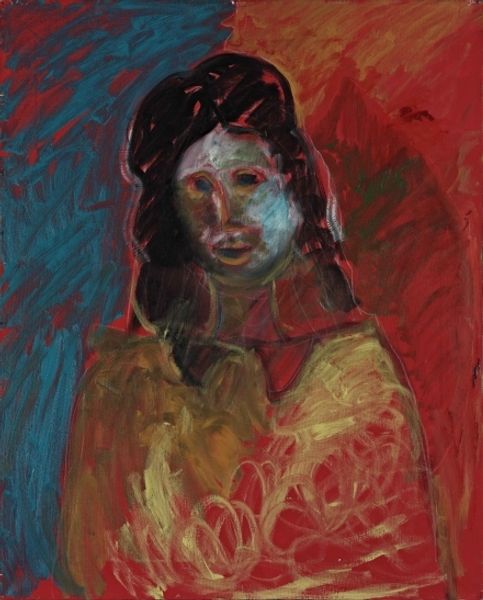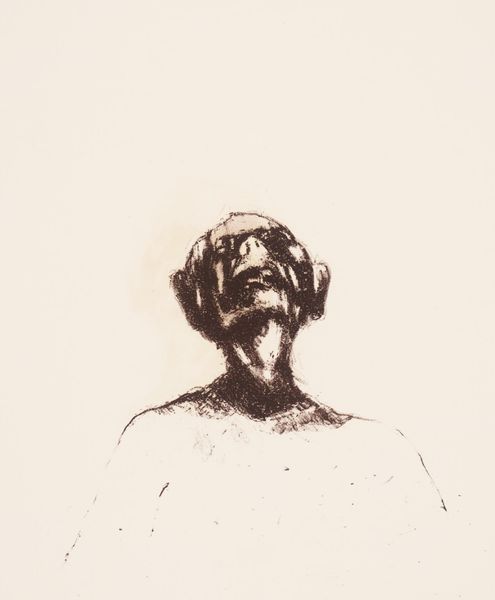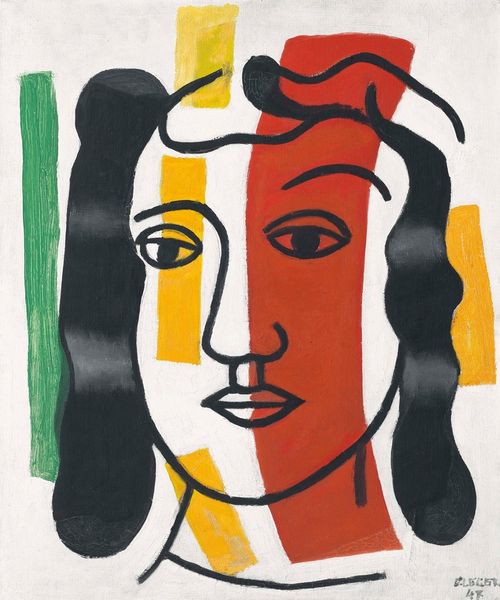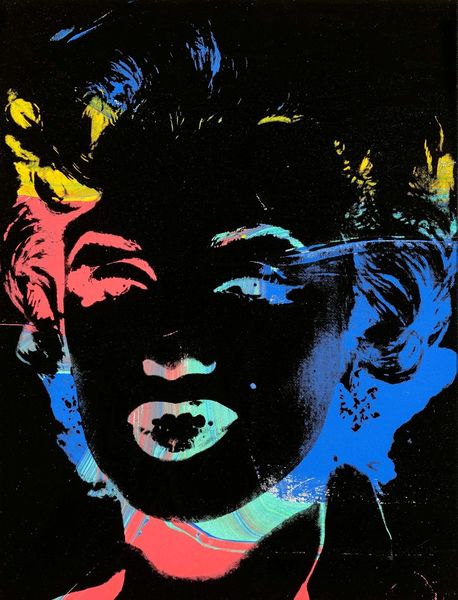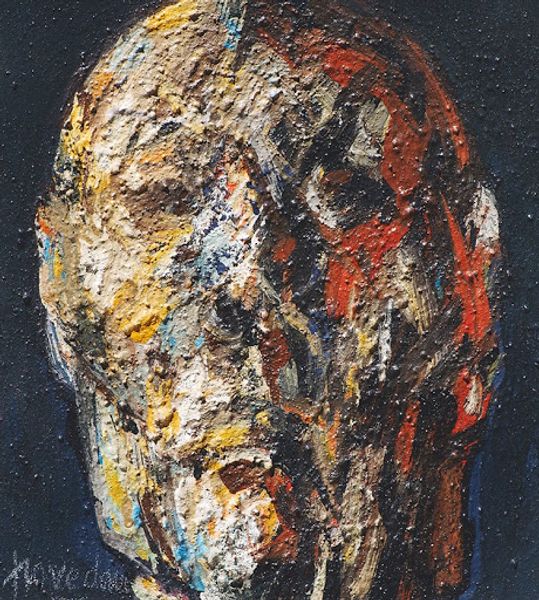
Copyright: Modern Artists: Artvee
Curator: Looking at this bold and vibrant portrait, Andy Warhol’s "Alexander the Great," created in 1982, immediately pulls you in. It's quite striking, don't you think? Editor: Yes, the colors jump out, and the application of the acrylic seems quite gestural, almost rushed. The orange background especially sets the tone. Curator: Warhol created this piece rather late in his career, as part of his series of celebrity portraits. Beyond the myth of Alexander, what do you think Warhol was trying to convey? Editor: Considering Warhol's fascination with mass production, I'm drawn to how he's translated a classical, sculpted form into a series of flat planes and bold colors, which gives it that sort of machine-printed, repeatable quality that's so emblematic of pop art. It seems to undermine the heroic ideal typically associated with Alexander. Curator: Absolutely. This is where historical context becomes so important. Alexander, a symbol of empire and power, gets filtered through Warhol’s lens of celebrity culture. There’s an interesting dialogue here—the ancient world meeting the modern obsession with fame and image, raising questions of appropriation and idealization. It brings into focus issues of historical narrative versus celebrity construction. Editor: It makes me wonder about the labor involved. The visible brushstrokes seem almost ironic for an artist known for his mechanical reproduction techniques. It hints at the physical act of making and subverts his clean, polished aesthetic, almost as a self-reflective commentary. Curator: It also challenges our perceptions about authenticity, right? Warhol toys with notions of high versus low art, the real versus the copy, which become increasingly blurred within our contemporary cultural landscape. Editor: The texture and application suggest an almost punk-like quality, challenging notions of value through these gestures. It forces you to question what has come to define wealth, identity, and material legacy through contemporary culture. Curator: Exactly, the vibrant hues alongside classical iconography become more complex the more you look into them, creating conversation around Warhol's views toward heroism, culture, and identity. Editor: Definitely. It pushes you to analyze not just the subject matter, but the conditions of artistic production itself.
Comments
No comments
Be the first to comment and join the conversation on the ultimate creative platform.
